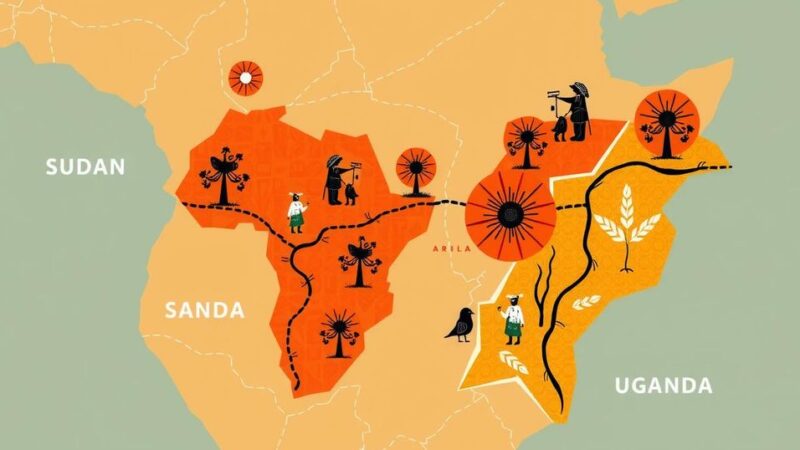A 6.4 magnitude earthquake struck central Chile, impacting the Maule region and Santiago. The earthquake occurred at a depth of 100 kilometers, causing tremors widely felt across the region. Chile’s position along the “Ring of Fire” accounts for its frequent seismic activity, with over 10,000 earthquakes of magnitude 4 or higher recorded in the past decade.
On Friday, a significant earthquake with a magnitude of 6.4 struck central Chile, affecting the Maule region and extending tremors to the capital city, Santiago. The United States Geological Survey (USGS) reported that the earthquake occurred at a depth of 100 kilometers (approximately 62 miles) below the Earth’s surface. The tremors were felt over a wide area, including cities such as Molina and Santiago, indicating the earthquake’s deep origin which mitigated localized damage but allowed for widespread shaking across the central region.
Chile is geographically positioned along the “Ring of Fire,” an area renowned for its intense seismic activity due to tectonic movements surrounding the Pacific Ocean. This region accounts for 75% of the active volcanoes on Earth and approximately 90% of global earthquakes, illustrating the geological volatility of this area. The occurrence of such earthquakes is expected, as Chile frequently experiences seismic events given its location within this hazardous belt.
The historical context of seismic activity in Chile reveals that the country has experienced over 10,000 earthquakes with a magnitude of 4 or higher in the past decade. On average, Chile records about 85 earthquakes each month, amounting to roughly 1,026 earthquakes annually. The frequency of seismic events reinforces the importance of earthquake preparedness and response strategies for the local populace.
In summary, the recent earthquake that struck central Chile serves as a reminder of the ongoing seismic threat posed by the geological dynamics of the “Ring of Fire”. With a high frequency of earthquakes recorded annually, Chile’s location necessitates continual awareness and readiness for future seismic events, underscoring the critical nature of earthquake research and preparedness.
The earthquake that struck central Chile is situated within the encirclement of the “Ring of Fire,” a zone characterized by a significant amount of seismic and volcanic activity due to tectonic plate boundaries. This region, encompassing numerous countries along the Pacific Rim, is noteworthy for its high frequency of earthquakes and volcanic eruptions. Understanding the geological dynamics of this area is vital for assessing risks and implementing preventive measures against natural disasters.
The 6.4 magnitude earthquake that affected central Chile highlights the ongoing seismic risks faced by this region. With Chile’s location within the “Ring of Fire,” the frequency of earthquakes necessitates robust preparedness strategies to mitigate impacts on the population. The historical data showcasing the high number of seismic events further emphasizes the urgent need for continued research and disaster readiness in the face of such natural phenomena.
Original Source: www.newsx.com






